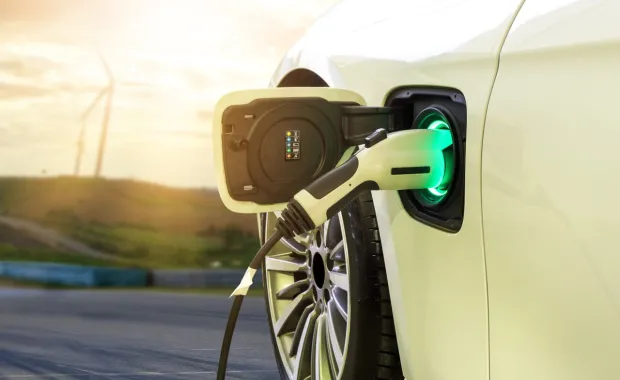In March 2023, the UK government made a significant step toward its commitment to a greener future, by introducing what is one of the most ambitious regulatory frameworks for the transition to electric vehicles in the world. These targets aimed to drastically reduce the country's carbon emissions by mandating that:
- 22% of all new vehicle sales be ZEVs by 2024
- 80% of new cars and 70% of new vans by 2030
- reaching 100% by 2035
At the time, the targets were met with optimism. Policymakers, the automotive industry, and environmental groups hailed them as both bold and achievable. This optimism was buoyed by the momentum in electric vehicle (EV) adoption, particularly driven by fleet and leasing companies and early adopters. But as we approach the first deadline, optimism has given way to concern. The automotive industry now finds itself grappling with complex challenges that were not fully anticipated, and it is rumoured that these first targets will not be met.
In this blog series, I’ll explore the significant hurdles now facing multiple stakeholders in the industry - the original equipment manufacturers (OEMs), dealerships, government bodies, automotive finance and insurance providers, and consumers.
The OEM’s dilemma
I begin with the OEMs, who find themselves stuck between a rock and a hard place as they attempt to meet these ambitious targets.
How were the targets established?
The 2023 ZEV targets were set against the backdrop of rapid EV adoption, particularly among fleet buyers and early enthusiasts. However, this overlooked the fact that much of the EV market growth was concentrated in specific sectors, helped by financial incentives and tax breaks, while the average consumer still faced cost and infrastructure challenges.
The typical 5 to 7-year product development cycle was also underestimated, resulting in supply chain pressures as OEMs shifted from petrol and hybrid to EV production. Tesla’s success also added to a skewed view of adoption, with its buyers representing a niche, premium market.
What about the consumer?
The big issue for consumers of course is price. Although EV prices have been gradually declining, they are still higher than petrol and hybrid vehicles, deterring many. Additionally, EVs are depreciating at twice the rate of their petrol and hybrid counterparts, which, while attractive for used car buyers, poses a problem for new EV owners. This depreciation also makes it difficult for automotive financiers to set appropriate residual values, challenging the affordability of EVs on a monthly budget.
Another significant consumer barrier to full-scale EV adoption remains the lack of sufficient charging infrastructure, particularly in rural areas. While this was a concern in 2023, the impact is more pronounced now, with home charging still a challenge for those without off-street parking. Public charging remains expensive, exacerbated by VAT discrepancies where electricity at home is taxed at 5%, while public charging faces the full 20% VAT rate.
So, how are we doing?
At the start of 2024, with focus set on the first target level of 22%, optimism was already waning. As of September 2024, the Society of Motor Manufacturers and Traders (SMMT) revised its EV sales forecast for the third time, now projecting only 18.5%, quite a long way below the 22% target.
The UK market enjoys a new vehicle registration level of around 2 million vehicles per year, the second largest in Europe behind Germany. This lower EV penetration suggests a potential shortfall of over 70,000 vehicles. The exact penalties, including fines, will depend on how the government enforces the rules and the cost of buying credits, but as an illustration, and taking the ZEV targets at the simplest level, a penalty of £15k per vehicle could mean a financial liability for OEMs of over £1.05 billion in just the first year.
What can OEMs do about this?
There are many ways that OEMs can start to address this issue. To overcome the price barriers, many are currently subsidising the price of EVs. Although the main reason is to reduce the growing oversupply problem, this could make EVs more affordable and increase sales. This is clearly not sustainable and is in turn having a negative impact on residual values, something which could drive sales down. An alternative to reducing EV pricing would be to increase the cost of petrol and hybrid vehicles to level the pricing playing field, but it would take a brave OEM to take this approach.
Another alternative is to artificially reduce petrol and hybrid vehicle sales by delaying delivery of 2024 ordered vehicles into 2025. This could increase the percentage of EV sales to move closer to or even meet the 22% target. Many dealer groups are suggesting that this scenario is already unfolding, with non-EV deliveries being deliberately delayed. This may solve the 2024 problem but will certainly make 2025 and beyond even tougher.
Is there anything within the ZEV mandate to help OEMs?
The ZEV mandate does offer some relief to OEMs who are struggling to hit sales targets. Simply put the OEMs earn credits for selling zero-emission vehicles. These credits can be banked or traded to meet targets, with fully electric vehicles earning more credits than hybrids. Although the system appears to offer some assistance, there are questions. How happy are the well-established OEMs about making the disruptive newer entrants like Tesla more profitable by buying credits from them? Another big question is about the cost of the credit purchase? If buying a credit avoids the £15k penalty but costs £15k it does not really work, so how would the price be set?
The UK represents less than 2.5% of global vehicle sales, so OEMs may simply shift their focus to less regulated markets, as suggested by the CEO of a major European OEM. Ultimately the UK’s automotive sector needs a cohesive approach by all impacted parties and government intervention to avoid further disruption and a potentially unattractive market for global OEMs.
How can OEMs adapt to these challenges?
Meeting ZEV targets isn’t just about manufacturing more EVs. It requires a complete rethink of the supply chain, customer engagement strategies, and financial models. OEMs are under pressure to adapt their product development cycles and ensure they are both compliant and competitive.
Data analytics is key to helping OEMs if the global transition to electric vehicles is going to make business sense for them. From forecasting demand and optimising supply chains to managing residual values and enhancing customer experiences, the ability to gather and interpret data enables manufacturers to make smarter decisions. As our recent Voice of the Client findings show, the OEMs who embrace digital transformation, backed by strong partnerships and insights, will be best positioned to succeed in this rapidly changing environment.
How can we help?
At CGI, we support our clients in using data-driven insights to drive profitability, ensure compliance, and improve the customer experience. By leveraging advanced analytics, we help can OEMs manage risk, improve operational efficiency, and stay ahead in this rather precarious market.
As associate members of the BVRLA, we are proud to be working with influential stakeholders across the fleet, rental, leasing and automotive industries to leverage new technology and deliver innovation. If your organisation is impacted and you need advice on the best approach, please get in touch.
Next up – Part 2: Dealerships
Keep an eye out for our next blog in the series tackling the challenges dealerships must overcome in the face of the ZEV targets.






